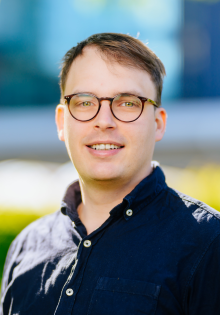Paderborn University scientists publish results in Optica
Scientists at Paderborn University have made further progress in the field of quantum research: for the first time, they have demonstrated a cryogenic circuit, i.e. one that works under extremely cold conditions, which makes it possible to control light quanta - known as photons - faster than before. Specifically, the researchers have found a way to actively manipulate light pulses consisting of individual photons with circuits. This milestone could significantly advance the development of modern technologies in quantum computing, communication and simulation. The results have now been published in the scientific journal Optica.
Photons, the smallest units of light, are crucial for processing quantum information. To do this, it is often necessary to measure the state of a photon in real time and actively control the flow of light based on this - a method known as "feedforward operation". Until now, however, there have been technical limitations: Measuring, processing and controlling the light were accompanied by time delays, which limited its use in complex applications. With their new method, the researchers have succeeded in significantly reducing this time delay - to less than a quarter of a billionth of a second. "We have managed to actively interconnect light pulses with the detectors, the customised electronics and optical circuits at cryogenic temperatures. This allowed us to manipulate single photons much faster than other groups. This possibility allows us to realise new active circuits in quantum optics that can be used for various applications," explains Dr. Frederik Thiele, who was in charge of the project together with Niklas Lamberty, both members of the "Mesoscopic Quantum Optics" group at Paderborn's Department of Physics.
The researchers used state-of-the-art technologies such as superconducting detectors for this development. The devices measure individual light quanta with extremely high precision. The electronics were used in a cryogenic environment: amplifiers and modulators were operated at temperatures of around -270 degrees Celsius in order to process signals without major delays. Integrated modulators were used as optical components to control the light based on the measurement data - with virtually no loss and at high speed.
The process is based on the measurement of light pairs, the "correlated photons". Based on the number of measured particles, the electronic circuit decides in fractions of a second whether the light should be passed on or blocked. The special feature of the integrated design is that physical losses and time delays have been minimised. In addition to the fast reaction, the circuit also generates less heat, which is essential when working in the smallest of spaces in cryostats (extreme cooling systems).
"Our demonstration shows that we can reach a new level of photonic quantum control with superconducting and semiconducting technology. This opens up possibilities for fast and complex quantum circuits, which can be of crucial importance for quantum computing and communication," summarises Thiele.
To the paper: https://doi.org/10.1364/OPTICA.551287
This text was translated automatically.




